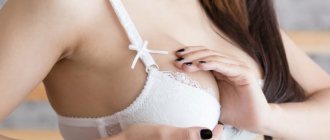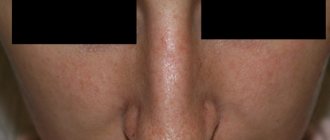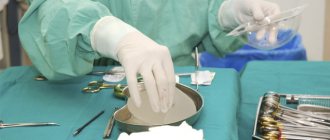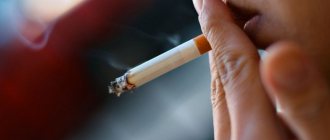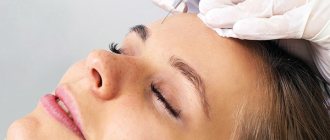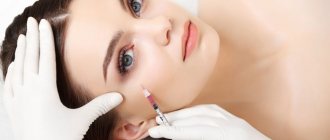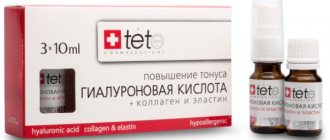After the intervention performed to correct the breasts, you would rather get in shape and enjoy your own reflection in the mirror. But the woman still has a rehabilitation period ahead of her. Even when it goes well, some difficulties are inevitable. Sutures after breast surgery require special attention. They can heal in different ways, causing no trouble for some, forcing others to see a doctor again.
How to treat sutures and wounds after a mastectomy at home
To treat sutures and wounds after mastectomy surgery at home, use antiseptics (solution of iodine, brilliant green, potassium permanganate, Chlorhexidine, Miramistin, Dioxidin), ointments (Kontraktubeks, Eplan, Levomekol).
General rules of care after breast removal
After removal of the mammary gland, you must follow the general rules of care:
- inspect the postoperative suture daily, and if any discharge, swelling or redness of the skin appears, see a doctor;
- treat the wound site 2-3 times a day with an antiseptic liquid, it can be alcohol, Chlorhexidine, iodine, brilliant green, pink solution of potassium permanganate, Furacilin, Dioxidin, Miramistin as prescribed by the surgeon;
- apply a sterile bandage.
From the time the dry crusts come off, you need to lubricate the scar with creams, gels and ointments. This helps speed up healing and prevent the formation of too dense tissue. The surgeon may recommend: Actovegin, Solcoseryl, Vulnuzan, Levomekol, Contractubex, Stellanin . The choice of specific drugs remains with the specialist, since upon discharge he determines the stage of healing and the risks of complications.
We recommend reading about breast lift. You will learn about the advantages of this operation, its methodology, indications and contraindications, rehabilitation period, results and price. And here is more information about complications after mammoplasty.
Application of Contractubex on sutures
Contractubex is applied to a formed scar after the sutures are removed and the dense crusts come off . Its properties:
- inhibits the increased proliferation of coarse connective tissue;
- relieves inflammation, irritation and allergies;
- inhibits the growth of bacteria;
- softens;
- soothes itching;
- smoothes the skin.
The drug stimulates healing and at the same time prevents the formation of a keloid, dense scar. Apply 2 times a day with gentle, gentle rubbing into the seam. Treatment lasts from several weeks to 2-4 months.
How to treat the breast if an absorbable suture is applied after surgery
If after the operation a suture is placed with absorbable threads, then antiseptics are used when treating the breast - Chlorhexidine, Miramistin, Dioxidine. When a scar is formed, it is recommended to lubricate it with ointments with a softening and wound-healing effect: Dermatix, Eplan. The basic rules for caring for a postoperative wound do not change, but the threads will not need to be removed.
Treatment of rough scars
Treatment of rough scars can be either medicinal or surgical.
Surgical treatment involves excision of the scar with plastic surgery using local tissue. There are many methods of scar plastic surgery, which are selected for each specific case.
Drug treatment includes wearing special patches and using ointments that block the excessive formation of connective tissue.
In particularly severe cases, when the scar continues to hypertrophy, glucocorticoid drugs are used in injection form. Such drugs must be used carefully so as not to transform a hypertrophic scar into an atrophic one.
Care after mammoplasty
The success of the operation depends on care after mammoplasty: treating the suture with alcohol, Miramistin, other antiseptics, applying healing and absorbable ointments.
How long should scars on the areola be treated with alcohol after mammoplasty?
It is recommended to treat scars on the nipple areola after mammoplasty surgery with alcohol until the crusts covering the wound fall off on their own. Use either alcohol or solutions of iodine, brilliant green at the discretion of the doctor. At the next stage of treatment, absorbable ointments are used.
Wound after breast reconstruction: what cream to use to heal
Your doctor may recommend a cream after breast reconstruction to help the wound heal faster:
- Contractubex – has a softening, anti-inflammatory effect, contains heparin, onion extract and allantoin;
- Dermatix is a silicone gel that smooths out protruding scars and lightens them;
- Imoferase – based on the enzyme hyaluronidase, reduces redness, pigmentation, itching, dryness, moisturizes;
- Vulnuzan – contains salts from Lake Pomorie, has a strong anti-inflammatory and cleansing effect, is used for long-term non-healing wounds;
- Eplan is the active ingredient glycolan, it inhibits the growth of bacteria, relieves pain, stimulates tissue restoration, and relieves swelling;
- Stellanin - exhibits both antimicrobial and wound-healing effects, accelerates the fusion of suture edges during inflammation;
- Mederma - softens scar tissue, prevents keloid formation. A similar result is provided by: Kelocode, Dermofibraze, Dermatix, Contrarubet, Zeraderm.
Creams for healing scars after nipple surgery
After mammoplasty surgery, creams, gels and ointments are recommended for healing scars on the nipples; the most effective ones include: Dermatix, Mederma, Kelofibrase, Contractubex, Imoferase. They are applied after drying and rejection of dense crusts.
How to treat a seam at home with Miramistin
To treat a seam at home, Miramistin is applied to the surface of the skin. It is most convenient to use a spray bottle. First you need to remove the remnants of the bandage covering the wound. If it is difficult to remove, you can moisten it with hydrogen peroxide. Then Miramistin solution is sprayed and left until dry. This drug has a wide spectrum of antimicrobial action and is indicated for the treatment of purulent and uncomplicated postoperative wounds.
Medicines
To ensure that the rehabilitation period passes without complications and inflammatory processes, and the sutures heal as quickly as possible, patients are prescribed a course of antibacterial therapy. Taking antibiotics can suppress the functioning of some organs, so this treatment is combined with antihistamines and the use of immunomodulatory drugs.
At the discretion of the attending physician, the drug course may be supplemented with the following drugs:
- Painkillers. Necessary for patients with low pain tolerance.
- Decongestants. The remedies help to quickly get rid of this unpleasant effect.
- Hormonal ointments. Prescribed if necessary and used in strict accordance with the doctor’s instructions.
If there are other diseases or special recommendations, the doctor supplements the list of medications with drugs from the corresponding group. These measures are necessary to prevent exacerbation of chronic diseases, the appearance of inflammatory processes and other unpleasant syndromes.
What foods should you eat to help your stitches heal faster after breast surgery?
To speed up the healing of sutures after breast surgery, you need to eat foods containing:
- protein – cottage cheese, fish, chicken, turkey;
- collagen – berry, fruit jelly, jellied meat;
- vitamin C – sea buckthorn berries, black currants, bell peppers, kiwi;
- vitamin A and provitamin carotene – carrots, liver, parsley, tuna, yolk;
- zinc – pine nuts, peanuts, beans, oatmeal.
Rehabilitation after mammoplasty or the real story of the transformation of Elena the Beautiful.
Oh, those woman's breasts!
Disputes about her beauty do not subside among either the male or female half of humanity. Conversations about football and shopping fade into the background when discussions about ideal shapes and sizes begin. Men highlight a woman's breasts as the sexiest part of a woman's figure. Girls, in turn, do everything to make their shapes more attractive. And if with magnificent breasts you need a minimum of effort, then ladies with one need to go to all sorts of tricks. After all, for example, short stature can be hidden with high heels, flaws in appearance can be corrected with makeup, but in a situation with small breasts, there’s nothing to think of! The maximum is Push - Up .
But in the summer it causes discomfort, and from a medical point of view, it cannot be worn all the time. What should those with small breasts do? How to feel sexy and desired? Plastic surgery comes to the aid of modern women. For more than 10 years, domestic doctors have been successfully performing a number of different operations. One of the most popular is mammoplasty. Wide selection of clinics, thousands of famous surgeons. In the media you can find a lot of information about the technique, methods and preparation for surgery. But very little is written about the rehabilitation period that begins immediately after installation of the implant. But women who decide to correct their breasts need to know how to properly care for their new bust. After all, half the success of the event depends on how this difficult recovery period went. Women's breasts after breast surgery require special care, since rehabilitation is often accompanied by painful lumps, swelling of the tissue at the operation site, and numerous small hemorrhages that cause the woman both physical and psychological discomfort. And if the decision has already been made, and the day of the operation is just around the corner, then you cannot avoid all this...
So how can you make this difficult period easier? What to do and how to behave correctly to avoid complications? What should I do to speed up the reduction of swelling and rapid healing of sutures? The closer day X is, the more questions arise in our heads. In this article I will try to give the simplest and most effective tips for quick rehabilitation. For help, I turned to a nice girl who had recently undergone breast augmentation surgery. Meet Elena! In March 2015, I became the owner of wonderful forms!
- Elena, hello! First of all, I would like to congratulate you on the update! Look great! It is clear that the recovery period is behind us! I also want to thank you for agreeing to meet with me! It’s very interesting to know how you went through this difficult path of rehabilitation? How did you cope with all the difficulties? Share your experience with us. To make those who have already decided to undergo plastic surgery feel calmer. And those who are still in thought made their final decision with your help. To begin with, tell the background about the preparation for the operation, about the operation itself, about the implants, access... In general, about everything that happened before you returned home from the clinic.
- Hello! Thank you very much for your congratulations! And thank you for giving me the opportunity to share the information you have! I really hope you find it useful! As you have already said, the operation was carried out in March of this year. The operation was performed by a master of his craft, surgeon M. The implants were chosen “ Arion ”, 225 ml., anatomical shape, medium profile. Periareolar access, under the muscle. On the eve of the operation, there is a mandatory conversation with the anesthesiologist. He gives his recommendations regarding preparation. The main thing is to strictly follow them! Then recovery from anesthesia will go smoothly, without nausea or feeling unwell. You should not eat or drink 5 hours before surgery. For me, the most difficult thing was not to drink, because... I’m a terrible water drinker... But, oddly enough, my brain gave the right instructions and I didn’t feel thirsty! On the day of the operation, I had a photo shoot at the clinic, because... I am a silver medalist in the mammoplasty promotion. And this is a prerequisite. That's why I arrived at 17:00. Now I remember that day...: - it was so beautiful! No worries! The entire clinic staff is filled with positivity! Only positive emotions! The site administrator and photographer were present at the marking. The shooting was fun and relaxed. With all these preparations, time flew by very quickly. It was time to go to the operating room. I changed into a suit and washed off my makeup. It is better to choose clothes for surgery that are as comfortable as possible. Loose pants, compression stockings underneath and a zip-up blouse. The operation was scheduled for 21:00. I was taken to the operating room and given an anesthetic injection. The anesthesiologist began to talk to me on a pleasant and abstract topic. He asked about the sea and offered him a glass of martini! I gradually became “drunk” and passed out in pleasant dreams! I went into anesthesia quite quickly!
- Elena, tell me, where did you come to your senses? What was the awakening like?
— Returning to the preoperative conversation with the anesthesiologist, he said that I would only wake up in the ward. Not even... Not like that... Even if I wake up earlier, I won’t remember anything. But I remember very well the first time I opened my eyes in the operating room. I saw the doctor and felt compression garments being put on me. I moved my shoulders, trying to help. The surgeon urgently asked to lie still and not twitch! I clearly remember how I moved from the table to the gurney on my own. I remember how they took me to the ward. These were such individual moments, frames. But memorable. In the ward I finally woke up. The time was around 11:00 pm. I felt great, very cheerful. There was no nausea, no dizziness - no reminders of anesthesia at all. I immediately began to unsubscribe to everyone, telling them that I was already after the operation and everything went great! I didn’t want to sleep, I chatted all night with my roommate.
— What sensations did you have in the chest area? Pain, heaviness, discomfort?
— Yes, there was slight discomfort. Such a feeling of fullness. Reminds an abundant flow of milk during breastfeeding. It's painless. In general, nothing bothered me that night and until the next day. Apparently, the anesthesia was still in effect. I prepared myself for the worst. After listening and reading the reviews, I thought it would be much more difficult. I asked for pain relief only the next day after the operation. Examined by a surgeon before discharge. He examined the breasts and adjusted the implants, as if putting them “in place.” That’s when it started to hurt a lot, I felt really bad. Sparks from the eyes, dizziness. I even had to lie down on the couch. This is where painkillers were needed, because... there was a way home ahead.
— Elena, what time were you discharged? How did you get home?
— I was discharged at about 15:00 the next day after the operation. I spent almost a day in the clinic. In general, no one is detained there longer. Until the evening at the latest. This is the case if you do not feel very well after anesthesia. In general, a day is enough. It was difficult to get dressed and put on shoes before leaving the clinic. To simplify this procedure, I advise you to take with you the shoes and clothes that are easiest to handle. I walked home with a slightly unsteady gait. But fortunately, I live nearby.
- Here you are at home! This is one of the difficult moments in this whole event. You were left alone with the new you and with all the consequences...... How were the first days? Was there any pain?
“Of course it hurt a little, but it was quite tolerable.” Especially for a woman who has gone through childbirth. The biggest inconvenience is getting out of bed and going back to bed. Sleep did not cause me much discomfort, because in ordinary life I sleep exclusively on my back. For a restful sleep at night, I took Ketanov. The doctor recommended up to three tablets a day, but I didn't need more. All this lasted three days, and on the fourth day everything suddenly went away and complete relief came. Maybe the general condition was normalized by antibiotics, which were prescribed immediately after the operation, for a course of 5 days. Together with them, I took Bifidum-Bag to normalize the microflora.
- Elena, tell me, when did you start sleeping on your side? Well, or at least somehow change your sleeping position.
— The surgeon allowed me to sleep on my side after about 10 days, but I was afraid. It started to unfold a little after a couple of weeks.
— How long have you been wearing compression garments? Is it generally impossible to remove it for certain periods?
— It is recommended to wear underwear for a month. You can take it off when swimming, but it’s better to buy another set to replace it. I wore it without a break for exactly 21 days. Then a little filonil. During the day I changed it to a sports top. From time to time I went topless and ventilated my seams. But I always put it back on at night. After a month, maybe a little more, I completely switched from compression garments to support tops and bras without wires. This is mandatory for up to six months. Bones in the bodice can lead to compression and deformation of the implant. And then you will have to wear compression garments again.
— Elena, since you touched on the topic of bathing, tell me how many days after the operation can I take a full bath?
- A bath? What are you doing! Shower only! And then in 5-7 days. Before that, no, no! I made do with wet wipes and light wipes. And then in the shower, everything needs to be done carefully, without sudden movements. Many people say that they washed themselves on the second day, but you need to strictly follow your surgeon's instructions. Doctors recommend not to rush.
— Are the seams on the chest somehow protected during swimming? Or have they already been removed by then?
— The incision along the areola is not touched; there are self-absorbable threads. But under the chest there was a small catch stitch. It is needed to hold the implant in the desired position. It is removed on the 12th day. It does not require any further care, nor did it leave a trace behind. Immediately after the operation, a special plaster is applied to the areola suture to prevent moisture from passing through when swimming. But allowing the alcohol solution to penetrate through it onto the seam. At least after bathing, I blotted it with a cotton pad soaked in alcohol. There is no need to remove and change it yourself. This patch was removed after about 5-7 days. They glued another one in its place and wore it for another week and a half.
— The bandage was removed, the seam has healed... What next? How and with what should I treat it so that it quickly becomes light and invisible?
— After removing the patch, there are two types of stitch care. This is a Mepiform patch or silicone gel. I used Dermatix gel. Since Mepiform is difficult to find in city pharmacies, and you need to select a certain size. With the Dermatix gel it is a little easier, but still has some disadvantages. It has a very sticky texture and takes a long time to dry. Therefore, after application you need to let it dry. You need to use special products for 6 months. They prevent scars and make the incision site lighter. At the moment, 3.5 months have passed since the operation, the scar has become pinkish in color.
— When did softness begin to return to your breasts? And what about nipple sensitivity?
— After two and a half months, the breasts became a little softer. Gradually everything returns to normal, including sensitivity. And this makes me very happy!
— It turns out that the swelling also went away around the same time?
- Well, there was no severe swelling as such. There was more swelling on one breast, as well as a bruise. The blue-yellow pattern appeared after a follow-up examination before discharge. I smeared it with Badyaga. The general swelling went away quite quickly, after three weeks. Everything went away from the second damaged breast a little later, about a month later.
— Women are very active by nature. And they cannot remain at rest for a long time. How quickly did you get into the usual rhythm of life? To what extent did the operation incapacitate you as a housewife? What difficulties did you encounter? After all, you have a little daughter.
— To be honest, there weren’t any particular difficulties. My daughter was with her husband, I lived separately for 10 days. Then, upon returning, she understood that my mother was sick! The first days it was impossible to even open the heavy front door. It doesn't hurt, but it's scary. The main task is to feel yourself. What you can do and what you can't. Cooking food for the first 3 days is unrealistic. It’s good if you have helpers next to you. You can't raise your arms for 2 weeks. We need to get something from the top shelves of the closet, so we substitute a stool. There is no need to clean the house either! A vacuum cleaner is not a burden for us. The floor cannot be washed, no sudden movements! After two weeks, again, see everything according to your feelings! Listen to yourself! Ideally, spend 10 days in complete peace! I started cooking after 7-10 days. And gradually I became fully involved in homework.
— Elena, thank you very much for such an extended course on rehabilitation and training! Personally, the information is very useful for me! To summarize all of the above, I would like to hear your wishes to our lovely girls!
— What I would like to wish to those who have decided to undergo surgery... The most important thing is to approach the choice of a clinic and surgeon with all responsibility, because deciding to have an operation is a rather serious step. And it is very important to be confident in your choice. Well, if the choice has already been made, there is no need to be afraid of anything, more determination and courage! It is also important to trust your surgeon regarding the choice of implants. And understand that safety comes first in this matter. On the day of the operation, follow all the instructions of the anesthesiologist, this is the guarantee that the anesthesia will be easy and you will feel good. Well, and of course, easy rehabilitation! Prepare for the fact that there will be pain, but it will be absolutely tolerable, and most importantly, it will pass quickly! The result is worth it! The discomfort of the first days will be forgotten very quickly, and beautiful breasts will delight their owner for many years! Regarding myself, I want to say that I went to mammoplasty for a long time, there were obstacles, condemnation from my loved ones, but still I decided to have the operation because I couldn’t live with my complexes…..They simply poisoned my life… And now, looking back back, I understand that it was worth it!!!! How important it is to feel like a full-fledged woman!!! And how wonderful it is that my dream came true! Now everything has become brighter for me, I feel feminine and attractive! Mammoplasty has improved my life tremendously! And now I only regret one thing: why didn’t I do this earlier??!! Therefore, if breast enlargement has become an obsession, and it prevents you from living a full life, then you need to take this step and become a truly happy woman! And it doesn’t matter who tells you what! This is your dream and goal! Go to her, no matter what!!!!
Sabina Aristarkhova
Contest participant
Bel Avenir
9335 February 02, 2021 Author: Sabina Aristarkhova (Bel Avenir) Rate the publication: Rating: 5 based on 2 votes
What else should you do to make the stitches on your chest heal faster?
To make the stitches on your chest heal faster, you need to:
- do not load the shoulder girdle - avoid lifting heavy objects, active movements of the limbs until scar tissue forms (from 15 to 20 days);
- monitor the condition of the wound, treat it with antiseptics, lubricate it with cream as prescribed by the surgeon;
- take a shower in the first month, covering the seam with a bandage;
- be sure to wear underwear with a slimming effect, and you should have at least 2 sets to change to clean ones every day;
- prevent pressure on the seam, do not sleep on your side.
Watch this video about caring for stitches after breast augmentation:
Types and methods of tissue connection depending on the type of operation
Having decided on the type of plastic surgery, you can find out what methods of applying sutures are available, their types and principles of application.
So, when performing reduction mammoplasty (breast size reduction), there are several types of tissue joining.
One type of breast reduction is the short suture method.
With this method, the thread is passed from the nipple to the lower fold of the breast. Such a seam is intended when it is necessary to remove no more than 800-100 grams of tissue.
This application technique is low-traumatic and has virtually no complications.
Photo: T-shaped method
There is also another breast reduction technique using the T-shaped or anchor method of connecting tissue.
The thread is passed down and connected there with a suture passing under the inframammary fold. This technique is used when a sufficiently large amount of tissue needs to be removed.
The thread that runs along the inframammary fold is almost invisible. Vertical and horizontal seams heal well and are invisible. The suture takes on its final appearance a year after breast surgery.
There are also several types of breast augmentation:
- Periareolar is applied to an incision made across the areola. It has an aesthetic appearance and does not cause discomfort;
- submarine - applied to the incision in the fold under the breast. This type of seam is suitable for women who choose a medium-volume implant; in this case, the fold becomes deeper and the seam is less noticeable.
- axillary method - the incision is in the armpit.
- tuba - a thread in the umbilical fold. With this type, only the management of a saline implant is possible; first the shell is inserted, and then a saline solution is injected into the implant using a syringe.
How to care for seams: brief instructions
For a speedy recovery, it is important that postoperative sutures scar normally. Even if the material was self-absorbable, they need care, because the tissues injured during the intervention will not heal instantly. This will take time, during which you need to ensure that no infection gets into the wounds and that the edges remain securely fastened.
Proper care will ensure not only a quick recovery, but also the absence of obvious signs that the woman had plastic surgery. What does it consist of:
- On the first postoperative day you need to rest in a semi-sitting position . This will help to avoid heavy load on the seams, hence their possible divergence.
- It is necessary to control the appearance of scars . At first they are red, but as they heal they turn pale and shrink in size.
Change in color of scars after mammoplasty within a year
- Sometimes the attending physician recommends treating the seams after mammoplasty with antibiotic ointments , in other cases they insist on simply wiping them with sterile wet wipes. Experts prescribe using brilliant green and other solutions to prevent infection.
- In each case, you need to follow the recommendations, since the material used for suturing varies, as do the individual characteristics of tissue healing. Therefore, you should not be arbitrary in choosing care products, ignoring the doctor’s opinion.
- After removing the sutures, you can smear them with absorbable creams and ointments , after consulting with the surgeon. Contractubex will help improve the appearance of scars by applying a silicone strip to the incision site overnight.
- It is mandatory to wear compression garments for 30 days . It will help to avoid excessive tension of the skin in the area of the seam, that is, it will not allow it to hurt longer than expected and, moreover, will not allow it to separate. And to prevent infection, you should change your underwear daily.
Compression garments are put on the patient immediately after surgery.
- You can wash only 3-4 days after surgery , avoiding getting water and shower gel on the suture areas. It is best to do this with a bandage, removing it after the procedure. You cannot rub the body in the area of the mammary glands with a washcloth for 3-4 weeks.
- You need to avoid physical activity for at least 2 - 3 weeks . Rest helps damaged tissues heal faster and relieve pain in the suture area. This is also important for their correct formation without hypertrophy.
- You will have to sleep on your back , without turning on your side or stomach, for at least 2 - 3 weeks. This way, it will be possible to relieve the skin of excessive tension, therefore, avoiding increased blood supply in the area of the sutures, the risk of their damage and hypertrophic development.
To learn how rehabilitation after mammoplasty should proceed, watch this video:
Types of hypertrophic scars:
— Conventional hypertrophic scar
A hypertrophic scar never extends beyond the wound. The reasons for its formation are the large size of the wound surface and the presence of constant trauma to the scar, for example, friction against jeans. Also, a hypertrophic scar can form as a result of a reaction to the suture material.
One of the features of hypertrophic scars is a benign course. Over the course of several months or years, they gradually become smaller and turn into ordinary normotrophic scars.
— Keloid
A keloid scar extends beyond the wound, spreading to normal tissue. The formation of a keloid scar usually occurs 1-3 months after the formation of epithelium at the site of the damaged skin surface. The scar constantly grows and becomes rough, protruding above the surface of the skin.
A keloid scar does not get better over time, and in rare cases tends to progress.
The formation of keloid scars is associated with individual characteristics of the healing process. Therefore, people who are predisposed to the formation of keloid scars need to choose techniques with the smallest incisions.
Hypertrophic scars can also be a consequence of postoperative complications such as hematomas, suppuration or suture dehiscence.
When the scar resolves
The natural desire after surgery is to look as if the breasts have always been like this without intervention. This will become possible only after at least 2 months . But even then the scar will change, becoming more and more smoothed out and invisible. The whole process can last a year. It also depends on what material was used during the operation:
- If self-absorbable threads were used to fasten the edges of the wounds (which happens with light intervention), they will disappear after 2 - 3 months. There is no need to remove them from the body, but caring for the sutures is still necessary.
- The use of synthetic threads requires their subsequent removal. Of course, the patient is eager to know in advance when the sutures are removed after mammoplasty. This will happen after 7 - 10 days. The doctor will evaluate the condition of the tissue dissection sites, the degree and quality of their healing.
- Haste can lead to the formation of rough, prominent scars, which will then have to be treated. And in the worst case, they may separate, or inflammation may occur in this area.
Removing sutures after laser breast augmentation
Removing sutures can be a little painful . To a greater extent, it depends on the mood of the patient herself. If she is afraid in advance, she involuntarily tenses, which intensifies the negative sensations. But the manipulation itself to remove the suture material is quite fast.
Another sign that causes concern and suspicion that not everything is going as it should is pain at rest and during movement. This feeling is natural, because living tissues and blood vessels were damaged during the operation. It lasts about 7 days. Very susceptible women complain that their stitches hurt after mammoplasty for up to 2 - 3 weeks. If all this time the feeling is decreasing, there are no other alarming signs, it does not indicate anything dangerous.
The pain in the area of the sutures may be stronger due to excessive physical activity of the woman, especially when the upper half of the body is involved (raises the arms, moves the shoulders). Incorrectly selected compression garments can provoke the sensation. In this case, it will need to be changed to a more suitable size.
Watch this video about how stitches are removed and further breast care:
Reasons for the formation of a rough scar:
- Patient's predisposition to excessive formation of connective tissue.
- Rough work of a surgeon with tissues.
- Strong tension on the edges of the surgical wound, which leads to stretching of the scar and its subsequent hypertrophy.
- Excessive use of electrocoagulation in the scar area, i.e. in close proximity to the dermis of the skin.
- Suturing the surgical wound with absorbable suture material close to the surface of the skin.
The surgical wound must be sutured in such a way that all absorbable sutures are deep inside.
Consequences of intervention
Healing of the sutures occurs with the formation of fibroblasts, which eliminate the tissue defect resulting from the incision. An epithelial coating then forms in the wound, preventing bacteria from entering.
Gradually, the edges of the wound are attracted to each other. Thin seams are formed, which, with favorable developments, are hardly noticeable, but are still visible. Carrying out mammoplasty involves their location in such places that prying eyes will be unable to detect its traces.
What is important for good seam aesthetics besides maintenance:
- Age . In young people, healing proceeds faster due to a high ability to regenerate and a more active immune system.
- Normal weight . With its excess or deficiency, recovery occurs more slowly.
- Nutrition . It must be complete to ensure the supply of “building material” for newly formed tissues. Sufficient intake of fluid into the body is also important.
- No bad habits . Alcohol and smoking interfere with the production of new cells.
Result of mammoplasty
Additional recommendations
To ensure that the patient is satisfied with the result of the operation two months after mammoplasty, we recommend that you listen carefully and follow all the doctor’s advice. You can return to an active lifestyle only after completing rehabilitation, otherwise unpleasant complications may arise. In addition, visiting saunas, baths, public swimming pools, and taking a bath will be prohibited until the stitches are completely healed. You will also have to give up some medications that can affect the regeneration process. You can find out all the details about the operation, the rehabilitation period, the materials used and their cost, as well as select the optimal date for the operation by calling the Bust Clinic breast surgery center at the specified phone number or using the option of making an appointment online. Our experienced specialists will tell you all the features of mammoplasty in our clinic and help you find the ideal option.
Complications during suture healing
With a high-quality operation and good care after it, negative consequences in the suture area are rarely detected. But each organism is unique, in addition, anesthesia and the intervention itself provoke some suppression of the immune system. Therefore, complications cannot be 100% excluded:
- Inflammation . It can occur due to bacteria entering the wound, as well as from the body’s rejection of implants. If the seam is red, swollen and the area around it hurts, this is an alarming sign. Most likely, you will need treatment with antibiotics, possibly dissection, washing the wound and re-fixing the edges of the injured tissue.
- Sometimes you have to remove the implants, undergo treatment and perform the operation again. If after 2 weeks swelling in the suture area persists or reappears, the temperature rises, pain occurs in the problem area and head, the incision oozes purulent fluid and blood, you should definitely consult a doctor.
- Formation of a hypertrophic or keloid scar . Complications can develop due to insufficient care. But sometimes the culprit is a feature of the body that was not previously detected because the woman had not previously undergone surgery at all. Thin, almost imperceptible stripes remain after the intervention for everyone. But hypertrophy must be treated, sometimes surgically.
- Seroma . It can occur not only in the immediate vicinity of the implant, but also in the suture area. Then serous fluid is released from it. If you don't take action, it's not far from here to inflammation.
- Seam divergence . This problem is also not difficult to notice yourself. If the suture breaks after mammoplasty, you need to see a doctor as soon as possible. Until his help arrives, the area of tissue damage should be treated with an antiseptic (iodine or brilliant green).
The seam hurts, pulls, tingles - is this normal?
If the suture pulls or tingles, or there is pain, this means that the healing process is taking place. These symptoms are not cause for concern if:
- localized only in the wound area;
- gradual subsidence of pain;
- reducing swelling;
- absence of fever, headache, chills, twitching pain;
- availability in the first weeks.
Moderate pain occurs for at least 2 months, but in some women it is felt in the first six months after surgery.
The seams do not heal
If the sutures do not fuse after surgery, it is recommended:
- wear special adhesive plasters that hold the edges of the wound - strips (you may need to stick them on for several months);
- wear retaining underwear for at least 4-6 weeks;
- include protein products in the menu (chicken, fish, turkey, cottage cheese), gelatin-based jelly, fruits and berries with vitamin C - sea buckthorn, rose hips, citrus fruits;
- do not allow the seam to get wet, dry thoroughly after water procedures;
- apply ointments with a wound-healing effect - Solcoseryl, Contractubex.
Suture oozing after mammoplasty
The suture after mammoplasty may ooze, that is, there is always a discharge of clear or slightly yellowish liquid on its surface. This symptom may be the first sign of seroma. This is the name for the accumulation of fluid in the area of contact between the gland tissue and the implant. It consists of the plasma part of the blood; with a small size and good outflow, it resolves on its own.
If there is no drainage, the patient does not wear shapewear, and puts pressure on the shoulder girdle, then the seroma increases. This causes severe pain and fever. In this case, a visit to the surgeon is required. It will help remove accumulated fluid. The procedure takes place under local anesthesia and does not affect the result of mammoplasty.
Watch this video about complications after breast augmentation:
What are the dangers of pus on the suture after surgery?
Pus on the suture after surgery threatens the development of inflammation. Its signs:
- after a week the pain does not subside, but intensifies;
- the wound and the skin adjacent to it are swollen, red, hot;
- headache, fever, and weakness occurred.
Antibiotics are prescribed for treatment, but this should only be done by a surgeon after examining the wound. In some cases, it is necessary to allow the outflow of pus; installation of drainage (tube or elastic band) will be required.
There is also this option - the wound healed normally, but after a few weeks (sometimes months and even years) swelling and a red polka dot appeared on the seam. It matures and opens with the release of pus. This happens when the suture material remaining in the wound is rejected (ligature fistula). If it comes out with pus on its own, then complete healing occurs. But perhaps surgical help will be needed. When surgery is not required, the following is prescribed:
- lotions with saline solution (10 g per 100 ml of water, boil and filter through sterile gauze, bandage in 6 layers);
- applications of ointment with ichthyol;
- washing with antiseptics (for example, Dioxidin), enzymes (Chymotrypsin).
After the suture material appears, it is removed and the wound is treated with antimicrobial agents.
Expert opinion
Tatyana Somoilova
Cosmetology expert
In all cases of suppuration or fever, you should urgently consult a surgeon. Self-medication is strictly prohibited.
What does it mean if the seam turns red after breast removal?
If after removal of the mammary gland the seam turns red, this means:
- Option for normal healing in the first 2-3 weeks, the suture requires observation and treatment.
- Infection when there is swelling, pain and fever. It is caused by the penetration of bacteria into the wound or the introduction of blood from the site of a chronic process (for example, the nasopharynx). One of the common options is erysipelas. Examination by a surgeon and antibiotic therapy are recommended.
- Relapse of the tumor process, which occurs after 8-12 months, is accompanied by enlarged lymph nodes, lumps in the chest, severe weakness, fever, pain in the gland, bones, and joints.
Risk of breast cancer recurrence
Why does the seam on the mammary gland darken?
The seam on the mammary gland may darken for the following reasons:
- formation of normal scar tissue;
- vascular sprouting (hypertrophic scar);
- healing with the proliferation of connective tissue and the formation of a rough keloid.
In the latter case, this is accompanied by the risk of a significant cosmetic defect. The main symptom is the spread of scar tissue beyond the postoperative wound. At the same time, patients feel itching in the suture area, and there is pain when pressing. For treatment, creams with silicone (Dermatix, Kelocode), laser therapy, and liquid nitrogen treatment are used.
A hypertrophic scar resolves over time, but usually this happens within a year . You can speed up the process by using:
- laser resurfacing;
- local hormone injections;
- ultrasonic treatment with Contractubex, Hydrocortisone;
- Lidase electrophoresis.
Why do stitches take so long to get wet after a mastectomy?
The main reason for the long healing of the suture after a mastectomy and the weeping surface of the wound is low immunity. It accompanies tumor processes and weakens as a result of taking cytostatic drugs, hormones, and radiation therapy. Risk factors are also considered:
- diabetes;
- obesity;
- age after 40 years;
- smoking;
- food lacking protein and vitamins;
- hot and humid weather;
- circulatory disorders.
It is important to consider that weeping wounds are a gateway for infection. It is recommended to dry them; for this, the surgeon may recommend:
- lubricate with iodine, brilliant green;
- treat with a mixture of calendula tincture and chloramphenicol;
- sprinkle with Baneocin powder.
Ointment bases can enhance separation, so only gels are applied (for example, Solcoseryl). If there is redness, severe itching or burning, or fever, you should immediately consult a doctor.
Redness around the stitch
Redness of the skin surrounding the suture occurs during an inflammatory reaction. If this happens in the first week, and the pain and swelling do not become stronger, then this requires continuation of the prescribed treatment - treatment with antiseptics, antibacterial ointments, wearing compression garments.
If redness appears some time after initial healing, there is swelling and an increase in local, general temperature, then this means infection has entered the wound. It can come from the outside or from a source of chronic inflammation in the body. You should consult a surgeon to determine the condition of the wound and the advisability of using antibiotics.
Why is the suture hard after surgery?
The suture after surgery may become hard due to the accumulation of blood under the skin (hematoma) or compaction due to inflammation. In the first case, there is usually no pronounced temperature reaction, but pressure on the seam is painful. For resorption, ointments with heparin and Lidaza are used locally.
If there are signs of an inflammatory reaction (red and hot skin, swelling, elevated body temperature), local therapy with antibiotics, their administration by injection, or taking tablets is prescribed. In case of compaction of any origin, surgical treatment of the wound may be required - drainage to ensure the outflow of accumulated fluid (inflammatory exudate or blood).
Yellow fluid is oozing from the seam
If the yellow liquid released from the suture is transparent, then this is a sign of seroma. This is the name for the accumulation of the plasma part of the blood, lymph. It may also contain a small admixture of blood from injured vessels.
After mammoplasty, it is often a reaction to the installed implant, suture material, and during mastectomy it is associated with an abundance of lymphatic pathways, which are inevitably damaged during the operation. Treatment requires fluid drainage and drainage installation. Sometimes seroma resolves on its own.
If the liquid is yellow, thick with a greenish tint, then it is pus. Its separation from the seam is a sign of microbial penetration. In such cases, an urgent visit to the surgeon is needed to determine treatment tactics - antibiotics or wound treatment followed by anti-inflammatory therapy. The purulent process does not disappear without treatment, but only spreads.
Blood from the suture after surgery
The appearance of blood from the suture after surgery occurs when the vessel is damaged or the clotting ability is reduced. If the bleeding is slight and there is no pain, then local use of a hemostatic sponge is recommended. Severe bleeding will require surgery. An urgent examination by a doctor is needed if there are signs of inflammation during blood discharge - redness, swelling, twitching pain in the suture area, temperature.
Possible consequences
Some unpleasant sensations can cause discomfort for a long time.
Pain
. Postoperative discomfort will completely disappear two weeks after the intervention, but the central nervous system will need time to get used to the changes in the body. During this time, the patient may experience discomfort, especially with sudden movements. To relieve pain, the doctor will prescribe suitable medications.
Swelling
. It can occur not only in the chest area, but also on the abdomen: it all depends on the individual characteristics of the body. The main swelling will subside in a few weeks, and the final result of the work of plastic surgeons will be assessed only after two months.
Bruises and bruises
. A rather rare phenomenon that worries women with thin sensitive skin. This effect will be helped by special ointments and creams that are selected individually for each patient, taking into account the characteristics of her body.
Other complications
Mammoplasty and mastectomy may be accompanied by postoperative complications: the internal or external suture on the nipple comes apart, the temperature rises, and after the suture is removed there are threads on the skin. With any of these consequences, it is important to contact a surgeon as soon as possible, as there is a risk of infection and bleeding.
The inner seam has come apart
Dehiscence of internal seams after breast surgery is possible with early exercise, heavy lifting, or refusal to use compression garments. Symptoms:
- chest pain;
- swelling;
- asymmetry of the mammary glands;
- discharge from the wound of yellow liquid with a bloody admixture.
For treatment, it is important to immediately contact a surgeon. He makes a diagnosis based on examination and ultrasound. Depending on the degree of suture divergence, either rest and tightening knitwear or surgical correction are recommended. It is impossible to cope with this problem on your own.
The seam on the nipple has come apart
If the suture on the nipple comes apart after surgery, you need to lubricate its surface with any antiseptic (iodine, brilliant green), apply a sterile napkin and immediately contact a surgeon. To prevent this complication, it is important not to load the shoulder girdle, not to carry heavy loads, and to use compression garments for at least a month.
Temperature rises after stitches are removed
If after removing the sutures the temperature rises above 37.5-38 degrees, then the reason for this may be infection. A variant of the norm is considered to be a temperature reaction of up to 37.5 in the evening for 14 weeks, provided that there is no increase in swelling, pain and redness of the skin.
In all other cases, it is important to consult a surgeon as soon as possible, since infection requires removal of the installed implants and a break for healing of at least six months.
Threads left after surgery: how to get them out
If there are threads left after the operation, the surgeon must remove them. To do this, you can contact a specialist at your place of residence, but you should not do it yourself. The visible part of the thread is insignificant, and the main segment is located under the skin. Without the skill of removing a suture, you can injure a postoperative wound. In addition, all manipulations must be carried out under completely sterile conditions to prevent infection.
Watch this video about what symptoms should alert you after breast augmentation and be a reason to consult a doctor:
Symptoms of complications
Changes in the appearance of sutures are often observed when implants are rejected. In this case, the central area of the wound surface begins to fester.
There is redness and swelling of the soft tissues located near the suture. A pulsation appears, and the temperature of the skin rises in that area. If such signs appear, immediate medical attention is required.
If the seams are not fused correctly, breast deformation will be visually noticeable. Symptoms of the inflammatory process are usually absent.
When infected, the clinical picture will depend on the time at which it occurred. So, if the infection was caused by a pathogenic microorganism during surgery, then the process will be accompanied by chills, headaches, bouts of vomiting, weakness, and an increase in body temperature.
When infected in the postoperative period, inflammation within the areola, the appearance of melted ends of the suture, and deformation of the bends are noted.
After how many days are the stitches removed?
Sutures are removed after mammoplasty and breast lift after 1-1.5 weeks, and for mastectomy, the estimated time frame is 12-14 days after surgery.
After breast augmentation or lift
After breast augmentation or lifting, the sutures are removed for 7-10 days, provided that the postoperative period proceeds without complications (inflammation, seroma, hematoma are absent).
After breast resection
Removal of sutures after breast resection depends on the volume of fluid flowing through the drainage. If it is no more than 50 ml, then the drainage tubes are removed, and after 3-4 days the sutures are removed. Most often this happens 12-14 days after surgery.
Types of scars:
1. Regular scar
Elastic, consisting of normal connective tissue. Normal color compared to surrounding skin. In terms of softness, it is in no way different from the surrounding skin.
Scar tissue gradually acquires strength and resistance to damage. By three months after surgery, the scar gains 50% of its normal strength. By the year after the operation, the scar strength becomes 100%.
2. Hypertrophic scar
One of the complications related to breast lift is the formation of hypertrophic and keloid scars.
With excessive collagen synthesis, a hypertrophic scar is formed, consisting of dense fibrous tissue. Such scars are characterized by a reddish tint, raised above the surface of the skin, sensitivity and pain, and can cause itching.
How long after breast surgery can the suture be wetted?
It is possible to wet the suture after breast surgery only after a while - usually on the 2-3rd day, since the drainage must be removed. The doctor may then allow the patient to take a warm shower, but the wound must be covered with a bandage. The water temperature should be moderately warm; it is better to use regular baby soap or gel with a neutral pH.
It is important to consider that if there are signs of inflammation, surgeons prohibit water procedures; then you should wipe the body with wet wipes in the area of the mammary glands. Bathing is not recommended for at least 1 month.
Causes of suppuration
The main reason for suppuration is infection from the environment entering the surgical wound through damaged skin, since any operation is accompanied by a skin incision. However, not only the environment, but also foci of chronic infection in the body can become a source of infection.
Currently, there is a conditional division of sources of infections:
1. Exogenous infections. These are infections that come from the environment. The main source in this case is dressing material, the hands of medical staff, and instruments. All materials and instruments that touch the wound must be thoroughly sterilized.
Air is one of the main sources of wound infection. In modern operating rooms, air is supplied sterile under positive pressure. However, air is never completely sterile; a small amount of bacteria is always present in it.
Also, one of the sources of infection can be the milk ducts. This is especially important if lactation has recently ended. Very often there is discharge in the milk ducts. It always contains bacteria. During surgery, especially when accessed through the areola, the risk of infection from the milk ducts is very high.
2. Endogenous infections. These are infections that are present in the body as chronic sources of inflammation. These include chronic tonsillitis, chronic sinusitis, adnexitis and others.
Infection from chronic foci of infection occurs through the bloodstream (hematogenous route) or through the lymph flow (lymphogenous route of spread). At the same time, for the development of inflammation, in addition to the infection itself, a decrease in general immunity is also necessary.

